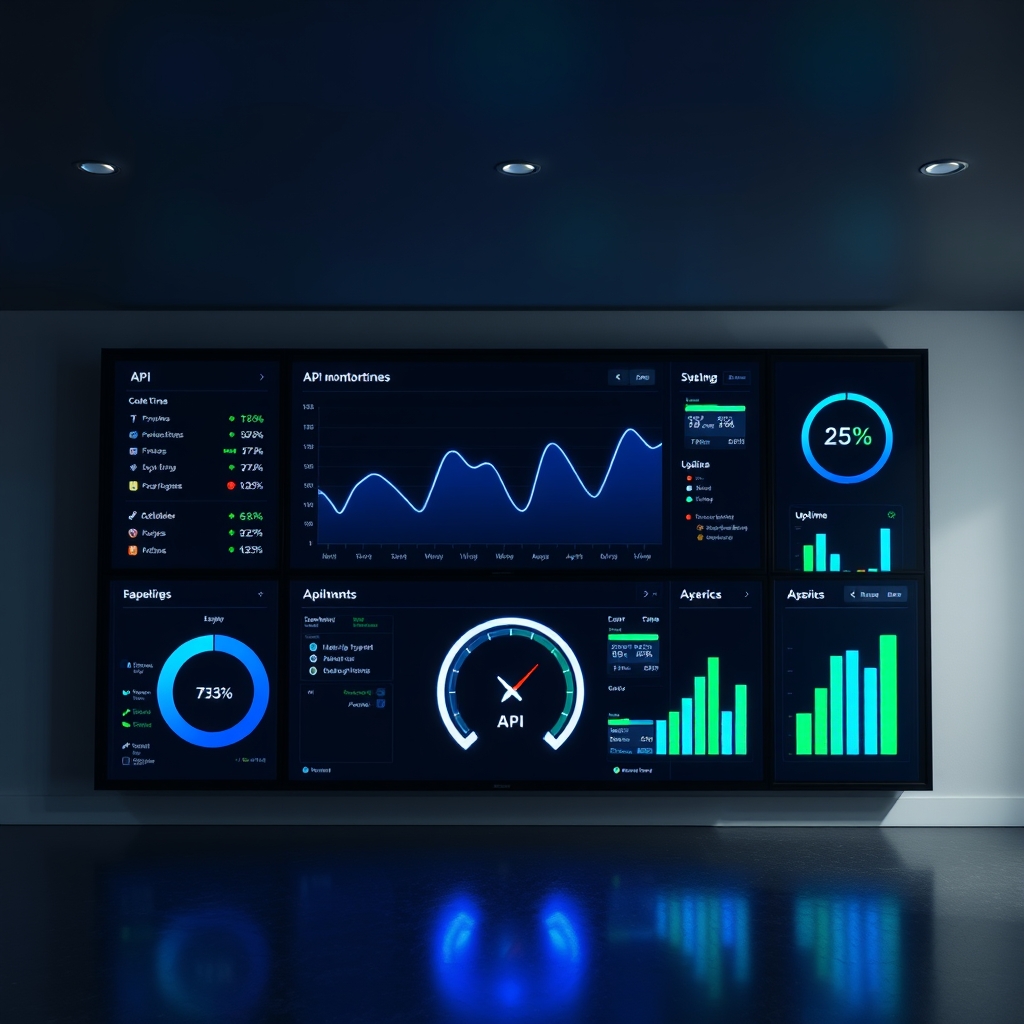Tracking Availability Trends for Your APIs Using Monitoring Tool

Tracking Availability Trends for Your APIs Using Monitoring Tool
Understanding the Importance of API Monitoring
In today's digital landscape, APIs are the backbone of many applications and services. They facilitate communication between different software systems, enabling seamless data exchange. However, with this reliance on APIs comes the critical need for monitoring their availability and performance.
API downtime can lead to significant business losses, affecting user experience and operational efficiency. Therefore, implementing a robust monitoring solution is essential for ensuring that your APIs are always available and performing optimally.
The Uptime API offers a comprehensive solution for monitoring API availability, providing real-time insights and alerts that help businesses maintain service reliability.
What is the Uptime API?
The Uptime API is a powerful tool designed for monitoring and tracking the uptime of APIs, websites, and services. It allows developers to keep tabs on service availability, track performance metrics, and receive real-time alerts through various notification channels.
With features such as customizable alerts, performance metrics, and historical data analysis, the Uptime API is an invaluable resource for businesses looking to enhance their API monitoring capabilities.
For more information, visit the Uptime API website.
Key Features of the Uptime API
The Uptime API comes packed with features that cater to various monitoring needs. Here are some of the standout capabilities:
- Real-time monitoring: Check intervals as short as 60 seconds ensure that you are always updated on your API's status.
- Customizable alert notifications: Receive alerts via email, SMS, webhook, or Slack, tailored to your preferences.
- Performance metrics: Track response times, uptime percentages, and error rates to gauge API performance.
- Historical data and trend analysis: Analyze past performance to identify trends and make informed decisions.
- SSL certificate monitoring: Get alerts for SSL certificate expirations to maintain secure connections.
- Keyword monitoring: Validate content by monitoring specific keywords.
- Multi-location monitoring: Ensure global coverage by monitoring from various locations.
Types of Monitoring Offered
The Uptime API supports various types of monitoring to suit different needs:
- HTTP/HTTPS APIs
- Public APIs
- Private APIs
- Keyword-based monitoring
- Custom status codes
- Response time tracking
Notification Channels for Real-Time Alerts
Staying informed about your API's status is crucial. The Uptime API offers multiple notification channels to ensure you receive alerts promptly:
- SMS
- Webhook
- Slack
Example API Responses
Monitoring Status
Here’s an example of a typical response from the Uptime API when checking the monitoring status:
{
"success": true,
"data": {
"monitor": {
"id": "mon_123456",
"name": "API Health Check",
"url": "https://api.example.com/health",
"status": "up",
"uptime": 99.95,
"response_time": 245,
"last_check": "2024-03-20T10:30:00Z",
"ssl_status": "valid",
"ssl_expiry": "2025-01-15T00:00:00Z"
}
}
}Alert Configuration
Configuring alerts is straightforward. Here’s an example of how an alert configuration might look:
{
"success": true,
"data": {
"alert": {
"id": "alert_789",
"name": "Downtime Alert",
"type": "email",
"recipients": [
"[email protected]"
],
"conditions": {
"status": "down",
"duration": "5 minutes"
},
"enabled": true
}
}
}Performance Metrics
Understanding performance metrics is vital for assessing API health. Here’s an example response for performance metrics:
{
"success": true,
"data": {
"metrics": {
"uptime_24h": 99.98,
"uptime_7d": 99.95,
"uptime_30d": 99.92,
"avg_response_time": 234,
"max_response_time": 1250,
"min_response_time": 89,
"total_checks": 1440,
"successful_checks": 1439,
"failed_checks": 1
}
}
}Use Cases for Uptime API
The versatility of the Uptime API makes it suitable for a wide range of applications. Here are some common use cases:
- E-commerce platforms: Monitor payment APIs to ensure transactions are processed smoothly.
- SaaS applications: Ensure service availability for users by monitoring critical APIs.
- Mobile apps: Track backend services to provide a seamless user experience.
- Financial services: Monitor critical APIs that handle sensitive financial data.
- Healthcare systems: Ensure patient data APIs are always available for healthcare providers.
- Gaming platforms: Monitor real-time services to enhance player experience.
- IoT applications: Track device connectivity to ensure reliable operation.
Frequently Asked Questions
What types of APIs can be monitored with Uptime API?
The Uptime API can monitor HTTP/HTTPS APIs, public and private APIs, as well as keyword-based monitoring.
How does Uptime API notify me of issues?
You can receive notifications via email, SMS, webhook, or Slack, depending on your configuration preferences.
Can I track historical data with Uptime API?
Yes, the Uptime API provides historical data and trend analysis to help you understand performance over time.
Is SSL certificate monitoring included?
Absolutely! The Uptime API includes SSL certificate monitoring and will alert you before expiration.
How often does Uptime API check my APIs?
The Uptime API performs checks at intervals as short as 60 seconds, ensuring you have real-time data on your API's status.
Conclusion
In conclusion, the Uptime API is an essential tool for businesses that rely on APIs for their operations. By providing real-time monitoring, customizable alerts, and comprehensive performance metrics, it empowers organizations to maintain high service availability.
The ability to track uptime trends and receive immediate notifications about issues allows businesses to respond swiftly, minimizing downtime and enhancing user satisfaction. With its rich data insights, the Uptime API enables informed decision-making, helping organizations optimize their API performance over time.
As businesses continue to evolve and rely more heavily on APIs, the need for robust monitoring solutions will only grow. The Uptime API stands out as a superior choice for API monitoring, offering the most complete and accurate data for your specific needs. By leveraging its capabilities, you can ensure that your APIs are always available, ultimately driving better business outcomes.
For more information on how the Uptime API can benefit your organization, visit the features page or check out the pricing options. Explore the FAQs for any additional questions you may have.